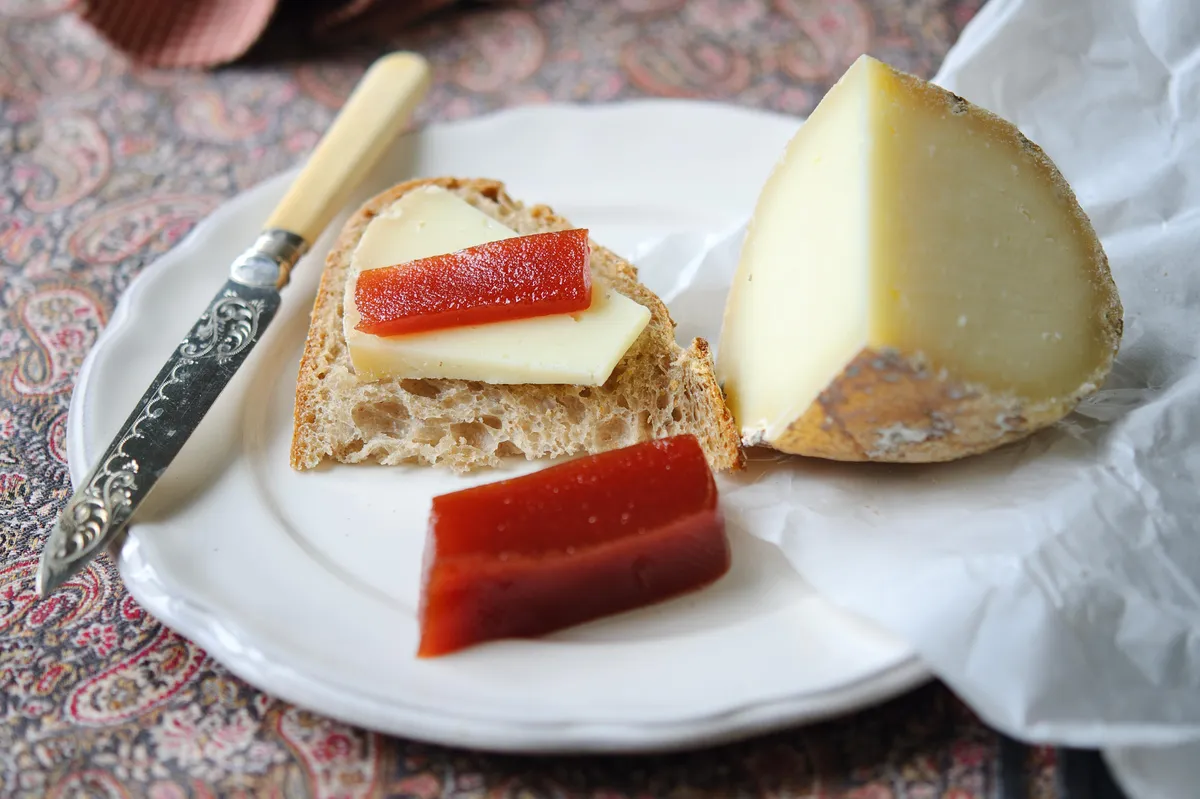There is a tradition of growing a single quince tree in an apple orchard. One quince in a fruit bowl fills the room with perfume for weeks, and a few slices of quince in an apple pie intensifies the flavour of the apples. A little quince goes a long way, one of the several factors that make this such a perfect garden tree.
Discover our list of the best quince recipes.
What is quince?
Quince fruit
Quince fruits are at the more luxurious end of the grow-your-own spectrum: very much providers of flavour rather than bulk. They are also satisfyingly tricky to get hold of by any means other than growing them yourself; you will only find in the most exclusive – and expensive – of food shops. Quince (Cydonia oblonga) is such a long-cultivated fruit – loved by the Greeks and Romans and planted throughout the Mediterranean and North Africa – that its origins are obscured in the mists of time, but they probably lie in Asia. It is now found growing wild in the Middle East and into Eastern Europe, from Saudi Arabia to Georgia.
They have been grown in England since the 13th century and were common in the 1800s, only losing popularity and becoming something of a rarity relatively recently, as gardeners turned to softer fruits. Even without its culinary properties, this tree works hard for its garden space.
Quince trees
Quince makes a small and wide, lax but handsome tree and has perhaps the least fussy blossom of all: the quince tree flowers are large and cup-shaped and gently scented, their size giving them a slightly vulnerable look so early in the year. The quince tree leaves have a sculptural quality. They are large and shapely, with a felted appearance, and the fruit emerges small and fuzzy, maturing to hang like over-sized golden baubles. I have never eaten a soft, ripe quince. Few in the UK will have. Yet even in warmer climates than ours they are still fairly sour and acidic when ripe.
What to do with quince
How to cook with quince
Here we have to cook quince to make them yield, but that’s not such a trial. The trickiest part is the chopping: you need a good, heavy knife to push through the solid flesh of a quince. After that, it’s all about slow cooking with quince: baking, stewing, poaching. In such cooking their firmness is an asset as the fruit holds its shape and texture. The taste of quince is citrusy, but gentler and without the sharpness of a lime or lemon, so it can be a brightener of other flavours – the fruity component in a tagine, the lemony note in an apple pie – or can stand alone, baked mellow and pink (as the yellow flesh turns on slow cooking) with the spices of the season. Its sharp fruitiness makes it a great companion to meats and cheeses, in the classic Spanish quince cheese paste recipe membrillo or when poached and preserved in vinegar and spices. See our quince recipes for a whole host of ways to cook quince. Here's a selection of quince recipes to explore.

How to plant a quince tree
Quince is pretty hardy and will survive down to -20°C. Despite this it does prefer a warm and sheltered spot. It likes a deep, fertile soil, but will tolerate most soils. Plant in autumn, winter or early spring, with a sturdy stake for a couple of years. Established trees need little pruning.
What sort of quince tree should I buy?
The most popular and widely available quince cultivars are ‘Meeches Prolific’ and ‘Vranja’. Both ripen early. ‘Vranja’ has softer flesh than most and a fine flavour, but ‘Meeches Prolific’ is the heavier cropper. ‘Leskovac’ can apparently ripen fully in warm summers in the UK.
Quinces are self-fertile but do better when grown near another plant of a different cultivar. ‘Meeches Prolific’ and ‘Vranja’ flower at the same time and are good pollinators for each other.
When to pick quince
Leave the fruits to ripen on the tree for as long as possible, but pick before the first frosts or they will not keep. Cut stalks with secateurs or scissors. Store in a fruit bowl, where you can enjoy their aroma, or in a cool place on slatted trays (but away from apples, or these will take on a quince flavour). Use within two or three months.
Where to buy quince trees
• Agroforestry Research Trust, 46 Hunters Moon, Dartington, Totnes TQ9 6JT. www.agroforestry.co.uk
• Keepers Nursery Gallants Court, East Farleigh, Kent ME15 0LE. Tel 01622 726465, www.keepers-nursery.co.uk






